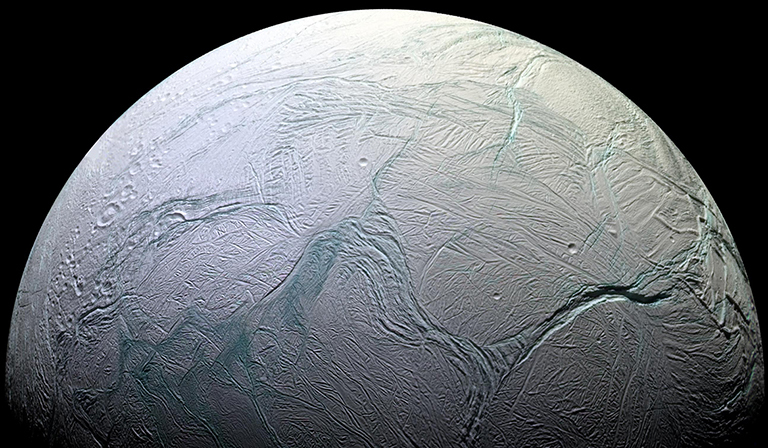Enceladus
February 1, 2022
While on a fly-by past Saturn, the Cassini probe discovered oceans under the icy crust of one of Saturn’s 82 moons. This caught their eye, as water is one of the ingredients needed for life. The inside of the moon is still to be explored, but the crust is identified to be very thin and icy, whereas under it is frozen salty water. It is expected that there is a large pocket of water at the South pole of the moon, due to the “huge plumes of water being ejected from the cracks in the crust” (Astrum), or cryovolcanism. About 250kg of water is blasted into space every second, at about 2000km/h. Cassini was not prepared for the discovery, so the only useful equipment they had was the Cosmic Dust Analyzer, “Designed to detect what the tiny dust grains in orbit around Saturn are made of”(Astrum), also used for Enceladus’s plumes. Despite the challenge, the Cassini mission found everything they were hoping to find: evidence of liquid water, organics, nitrogen, and energy source. These are potential signs of life. There are many more interesting facts and discoveries about Enceladus than just the Cassini mission’s discoveries: the moon is considered to be one of the most fascinating in the Solar System.
Image:
https://solarsystem.nasa.gov/system/content_pages/main_images/1534_50_Enceladus_768.jpg
Works Cited:
Astrumspace, director. YouTube, YouTube, 5 Oct. 2020,
https://www.youtube.com/watch?v=Y35LTzFB-2E. Accessed 1 Feb. 2022.
“Enceladus.” NASA, NASA, 25 Sept. 2018,
https://solarsystem.nasa.gov/missions/cassini/science/enceladus/.
